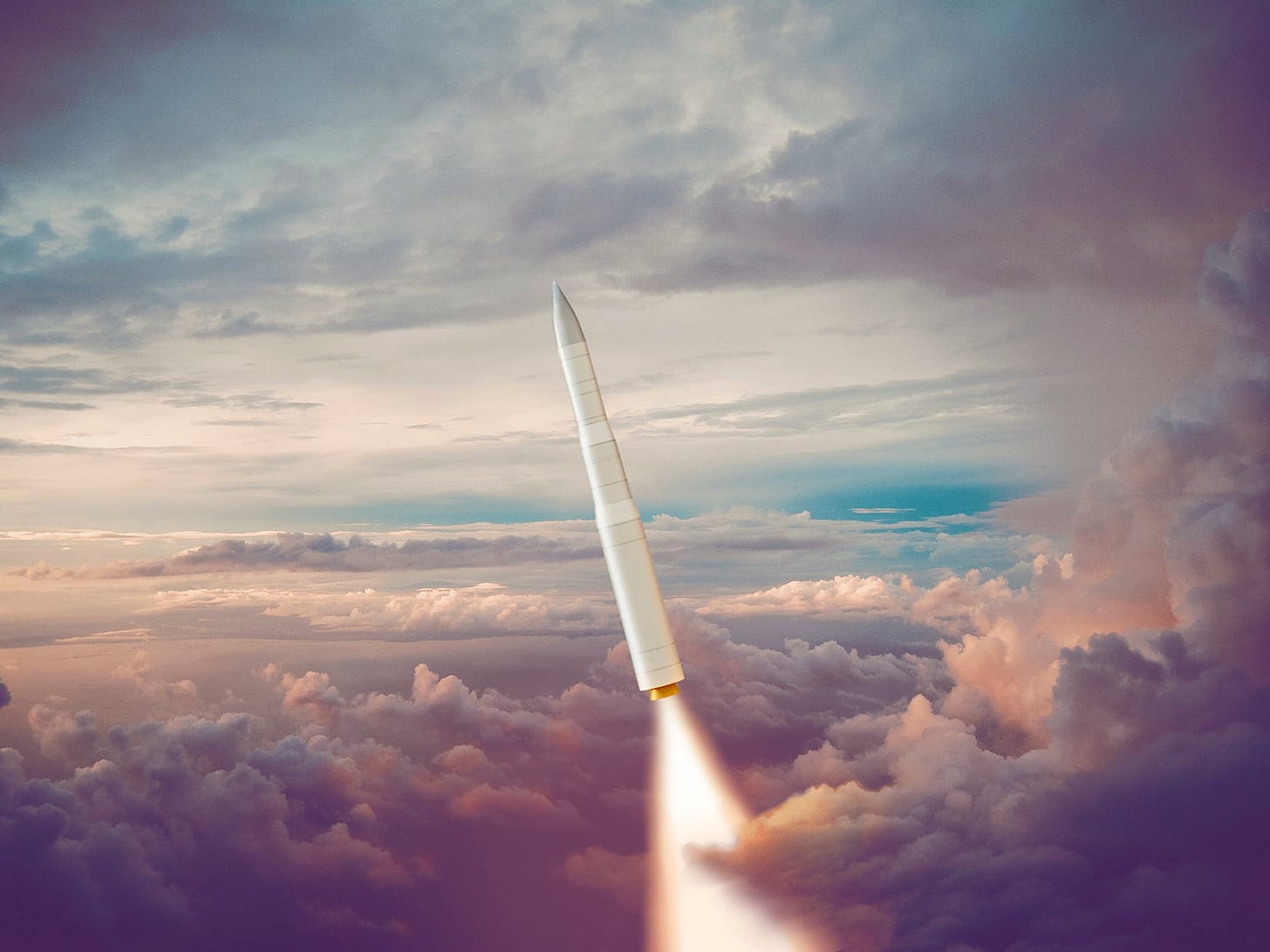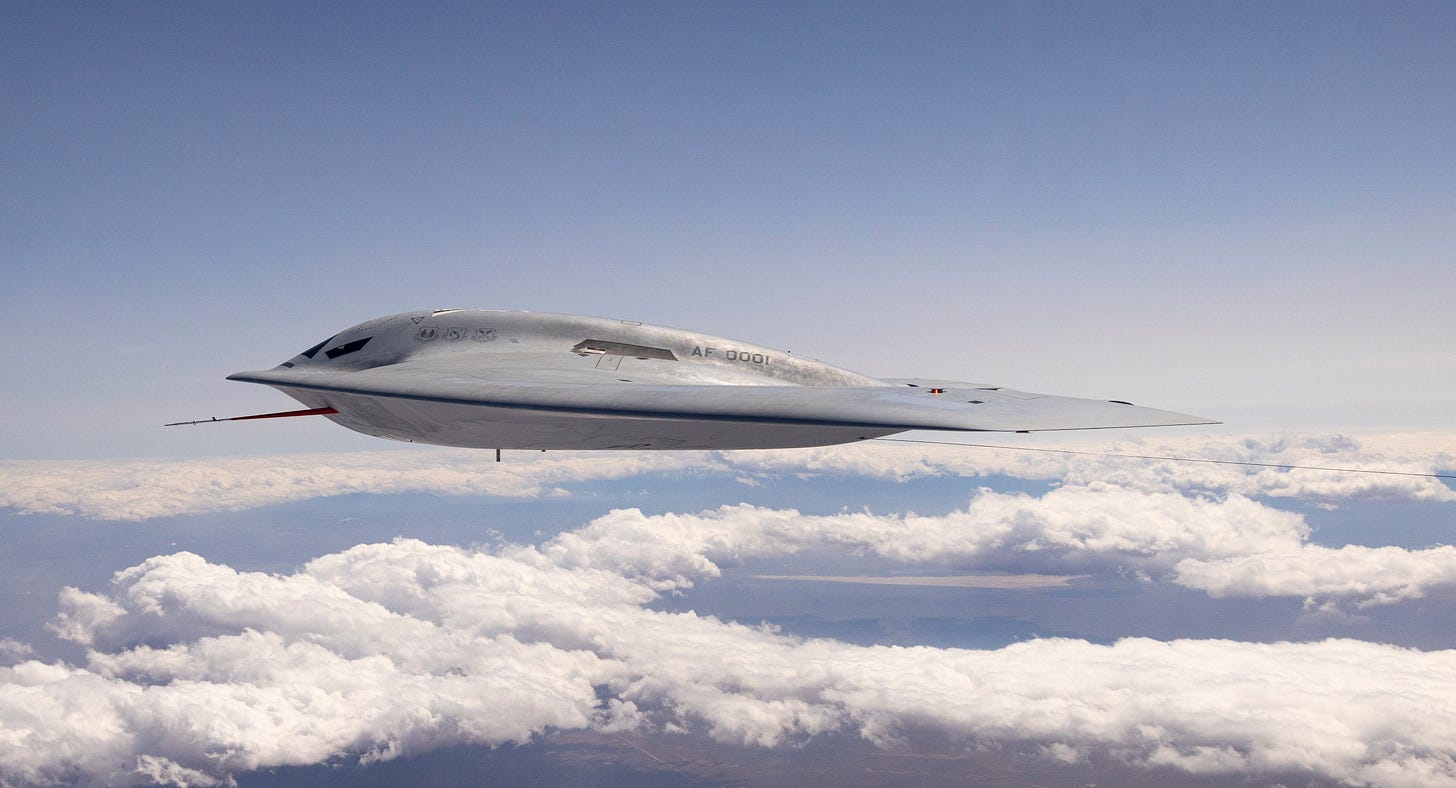Call it what it is: a new nuclear arms race
Look closely and the Pentagon is not merely modernizing its nukes
Good morning – Here is your Saturday newsletter.
Today we’re looking at the incredible U.S. weapons development sparking a new nuclear arms race, and asking if a new anti-nuclear movement is just around the corner.
Did you know that PeaceQuest is read by thousands of people every week? My thanks to the 126 people who are paid subscribers and supporting peace education.
In peace,
Steve

When It Comes To Nuclear Weapons, Tell It Like It Is
In a new article, David Cortright and William D. Hartung argue that euphemistic language, like the Pentagon’s use of the term “modernization,” obscures the reality of its extensive nuclear weapons expansion.
While “modernization” sounds benign, akin to upgrading a home, it masks a vast $1.7 trillion program to enhance the U.S. nuclear arsenal over 30 years.
“The nuclear upgrade is not merely a refurbishing of aging weapons as the modernization narrative implies,” they write on Inkstick. “It is a vast program for the reconstruction and enhancement of the entire nuclear arsenal and it is an unnecessary and wasteful diversion of federal funds to pursue an arms race with Russia and China that increases the risk of nuclear war.”
The Pentagon has plans for land-based missiles, ballistic missile-firing submarines and missiles, new aircraft and air-launched cruise missiles, and enormous new facilities to produce plutonium components for additional nuclear warheads.
The nuclear upgrade is… a vast program for the reconstruction and enhancement of the entire nuclear arsenal
Back to the 1980s
The authors trace the term “nuclear modernization” to the 1980s U.S.-Soviet arms race, where it described technological advancements in weaponry.
The term faded after Cold War-era arms reduction treaties but resurfaced with rising geopolitical tensions.
Under the Obama administration, significant spending on nuclear programs was a concession to secure Republican support for the New START treaty, which restricts the US and Russia to 1550 strategic warheads each.
The Trump administration expanded these efforts, abandoning key arms control agreements and initiating new weapons programs under the guise of modernization.
Vast new capabilities to destroy the world
Although some programs are labeled as replacements for aging systems, they often incorporate significant new capabilities, enhancing destructive power and expanding the arsenal.
For example, the B-21 stealth bomber and upgrades to the B-2 and B-52 fleets increase nuclear delivery capacity. This perpetuates the triad system of land, sea, and air-based nuclear weapons.
A renewed arms race
The U.S. and NATO’s planned deployment of intermediate-range missiles in Europe, capable of carrying nuclear warheads, exacerbates tensions with Russia.
“The missiles will be conventionally armed but will be capable of carrying nuclear warheads. Russian defenders will have no way of verifying which it is,” they write. “These actions will generate an action-reaction cycle, giving impetus to further weapons building in Russia and China.”
Weapons profits
The new boost in arms building is a bonanza for military contractors. They are reaping record profits as enormous amounts of taxpayer funds are channeled into unaccountable Pentagon programs.
The authors argue that arms reduction advocates must abandon euphemisms, confront the reality of nuclear proliferation, and rally public pressure to curb excessive military spending and its dangerous consequences.
“None of this is likely to change with the new Trump administration, at least not without greater public pressure to reduce excessive Pentagon spending,” they conclude. “Advocates for arms reduction face difficult challenges in the current political climate, but efforts to halt and reverse the arms race are necessary, now more than ever.”
Speaking personally, I became a peace activist in the late 1980s at the tail end of a massive mobilization of the international anti-nuclear movement which saw a million people gather in New York’s Central Park in 1982.
Is it possible that we could see the resurgence of an anti-nuclear movement in a future crisis? Or has the issue receded so far from public consciousness, that such a mobilization will never be repeated?
Please explain your choice by leaving a comment.
Results from last week’s poll
Last week I asked you, “Should Ukraine be invited to join NATO, even if it might block a peace agreement with Russia?” Only 35 people participated in the poll, so the results may not be representative of our readership. Nevertheless, most people answered “No” (60%), and one-in-four (23%) said they “don’t’ know/unsure.” Another 17% said, “yes.”
Did you miss last week’s newsletter?
Viewed 2.07K times
Thank you for everything you do for peace.
Steve






I am working on a follow-up book to the From Hiroshima to Fukushima to You published in 2014. (Maybe it will happen, maybe not.) While library hopping and book borrowing, I came to the conclusion that the entire nuclear industry rests solely upon its weapons. No nuclear power, no nuclear weapons. Since the weaponeers are addicted to their weapons, they HAVE TO GET THEIR FIX. Masquerade them as "green solutions", make them "small" (the main advantage of small nuclear reactors is the production of plutonium, the stuff of bombs, our government even speaks of "reprocessing" which is the separation of plutonium required for bombs - and environmentalists forget reason and support the government. It is just another scam built upon taxpayers' money and false narratives. New nuclear arms race = new nuclear power reactors.
I feel that the possibility of a nuclear war is escalating more rapidly than we are believing and a lot of money is being spent on making sure that each country hopefully will have what they need. Countries are on alert and fearful. More respect and care of the people is needed. The death toll has been awful already in the wars in different parts of the world.
Sister Marilyn Larocque, RHSJ